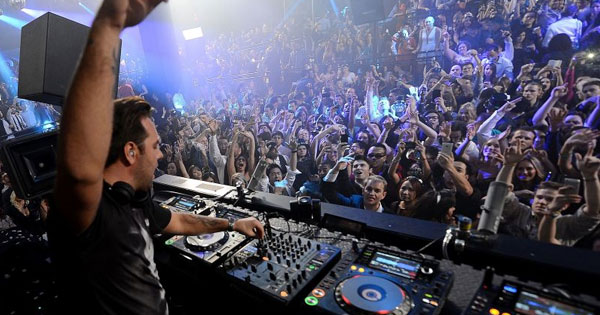Iranian Traditional Music is a profound and soulful art form that has been shaped by the contributions of legendary musicians. These masters have dedicated their lives to preserving and enriching the musical heritage of Iran. In this article, we explore the lives and legacies of some of the most influential figures in Persian classical music, whose exceptional talents and innovations have left an indelible mark on the cultural landscape.
Ostad Lotfi: The Pioneering Poet of Persian Classical Music
Ostad Mohammad-Reza Lotfi was a pioneering figure in Persian classical music, known for his exceptional skills as a tar and setar player. Born in 1947 in Gorgan, Iran, Lotfi’s passion for music was evident from a young age. He studied under renowned masters such as Ostad Ali Akbar Shahnazi and Ostad Davami, which greatly influenced his development as a musician.
Lotfi’s profound understanding of Iranian traditional music allowed him to innovate while staying true to its roots. His collaborations with iconic musicians and vocalists, including Mohammad-Reza Shajarian, produced timeless pieces that resonate deeply with fans of Persian classical music.
Lotfi’s legacy is marked by his dedication to preserving and revitalizing traditional Persian music, making significant contributions that continue to inspire new generations of musicians.
Ostad Hossein Alizadeh: Modern Maestro with Traditional Roots
Ostad Hossein Alizadeh is one of the most celebrated contemporary figures in Iranian traditional music. Born in 1951 in Tehran, Alizadeh has been instrumental in bridging the gap between classical and modern Persian music. He studied under great masters such as Ostad Ali Akbar Shahnazi and Ostad Houshang Zarif, gaining a deep understanding of traditional techniques.
Alizadeh’s innovative compositions and performances have expanded the boundaries of Iranian traditional music, incorporating modern elements while maintaining the essence of Persian classical traditions. His work with ensembles like the Aref Ensemble and the Dastan Ensemble has brought Iranian music to international stages, earning him widespread acclaim.
Alizadeh’s contributions have ensured that Iranian traditional music remains vibrant and relevant in today’s musical landscape.
Ostad Jalil Shahnaz: The Virtuoso of the Tar

Ostad Jalil Shahnaz is revered as one of the greatest tar players in the history of Iranian traditional music. Born in 1921 in Isfahan, Shahnaz displayed an extraordinary talent for music from a young age. His mastery of the tar, characterized by his intricate melodies and profound emotional expression, set him apart as a virtuoso. Shahnaz’s performances were marked by their technical precision and deep connection to the spiritual and cultural roots of Persian music.
Throughout his career, he collaborated with several legendary vocalists and musicians, contributing to numerous recordings and live performances now considered classics. Shahnaz’s dedication to his craft and his ability to convey the soul of Iranian traditional music through his instrument has left an indelible mark on the musical heritage of Iran.
Ostad Mohammad-Reza Shajarian: The Voice of Persia
Ostad Mohammad-Reza Shajarian, often referred to as the “Voice of Persia,” is arguably the most famous vocalist in the realm of Iranian traditional music. Born in 1940 in Mashhad, Shajarian’s exceptional vocal talent was recognized early on. He trained under several prominent maestros, refining his technique and expanding his repertoire.
Shajarian’s voice, with its incredible range and emotive power, brought new life to traditional Persian poetry and music. His collaborations with master musicians like Ostad Parviz Meshkatian and Ostad Hossein Alizadeh resulted in some of the most beloved recordings in Iranian traditional music.
Shajarian’s dedication to his art, combined with his advocacy for cultural and musical heritage, has made him an enduring symbol of Persian classical music.
Ostad Parviz Meshkatian: Reviving the Santur

Ostad Parviz Meshkatian was a master of the santur and a pivotal figure in the revival of this traditional Persian instrument. Born in 1955 in Neyshabur, Meshkatian showed an early affinity for music and went on to study under renowned masters. His deep understanding of Iranian traditional music and his innovative approach to composition and performance helped rejuvenate the santur’s role in Persian classical music.
Meshkatian’s collaborations with vocalists like Mohammad-Reza Shajarian produced timeless pieces that are celebrated for their complexity and beauty. He founded the Aref Ensemble, which played a crucial role in promoting Iranian traditional music both domestically and internationally. Meshkatian’s legacy lives on through his recordings and the many students he inspired.
Conclusion
The masters of Iranian Traditional Music have profoundly influenced the art form, each bringing unique contributions to the Dastgah system. Their dedication and innovations have ensured that this rich musical heritage continues to thrive.
Through their timeless works, these legendary figures have preserved and enriched the essence of Persian classical music for future generations. The intricate melodies and emotional depth found in their music continue to resonate with audiences worldwide, showcasing the enduring beauty of Iranian Traditional Music.
As we celebrate their legacies, we are reminded of the cultural and spiritual significance that Iranian music holds in connecting us to Iran’s rich history and artistic tradition.


















